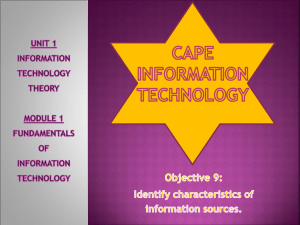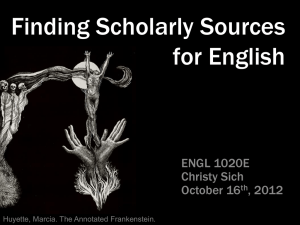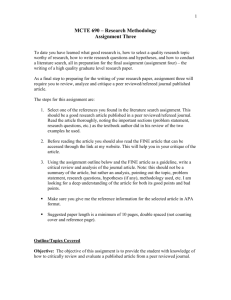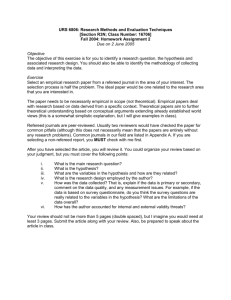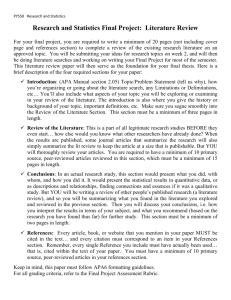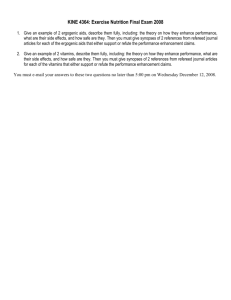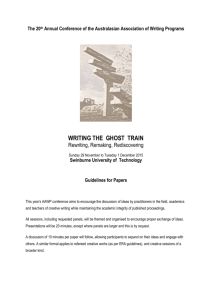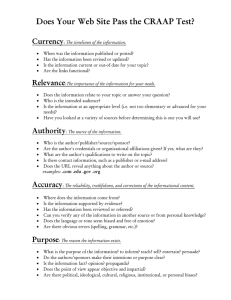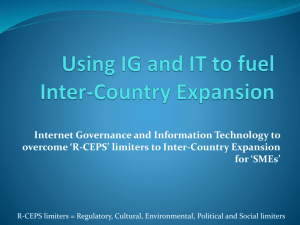PsycInfo for Education Research
advertisement
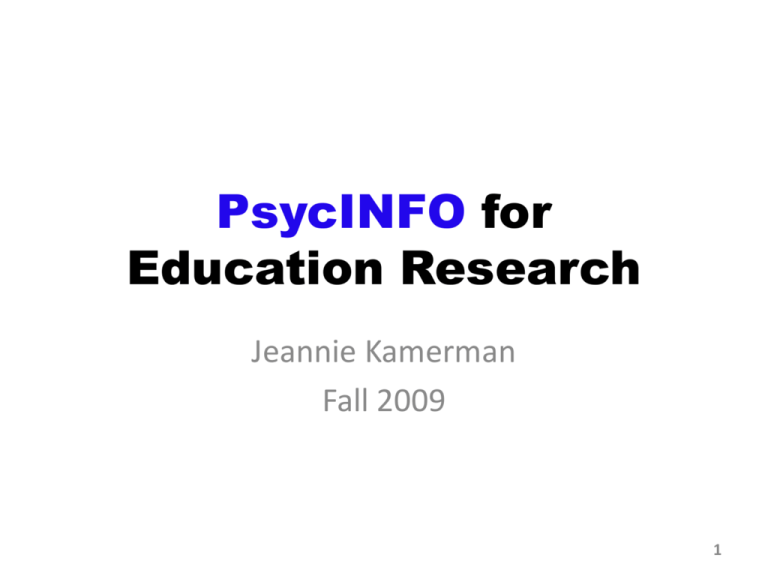
PsycINFO for Education Research Jeannie Kamerman Fall 2009 1 Table of Contents Path to the database Slide 3 Peer-reviewed defined Slide 8 Option 1: Keywords & limiters Slide 11 Option 2: Keywords with more limiters Slide 17 Option 3: Classification codes Slide 19 More tutorials Slide 23 Research consultation Slide 24 make an appointment for a research consultation 2 Finding the database: PsycINFO To find PsycINFO database go to the library’s homepage and under the Quick Links in the lower right, locate the Find category and click the Online Databases Link. 3 Library homepage To find PsycINFO database select the letter P. A display of the library’s databases beginning with P will be returned to you. 4 A to Z list of databases Select PsycINFO. 5 An abstracting and indexing service which covers scholarly books, journals, and dissertations. More than 2 million records from the early 1800s to the present are included. PsycINFO To limit the number of items returned we will use some of the limiters. We will limit by “date span” and “peerreviewed journal only”. 6 We will be searching for a specific learning disorder “autism” and look for particular interventions. We will request that the search be limited to articles written between 2005 to 2009 and that the articles be from peer-reviewed journals. 7 Peer Reviewed v. Refereed Often people use the terms peer reviewed and refereed journal interchangeably. You may or may not be interested in the distinction between the two, and may want to skip the next two frames. However if you continue to read, there is a difference between the two terms. 8 Peer Reviewed v. Refereed Cabell’s definition of refereed cites specific differences between the terms: A refereed article is one that is blind reviewed and has two external reviewers. The blind review requirement and the use of external reviewers are consistent with the research criteria of objectivity and of knowledge. 9 Peer Reviewed v. Refereed From Ulrich’s FAQs page a bit of confusion. Q: Where does the information about refereed journals come from? A: The Ulrich's editorial team assigns the "refereed" status to a journal that is designated by its publisher as a refereed or peer-reviewed journal. Often, this designation comes to us in electronic data feeds from publishers. In other cases Ulrich's editors phone publishers directly for this information, or research the journal’s information posted on the publisher’s website. 10 Keywords and limiters Note that we are in the Advanced Search tab. First we enter our keywords, and then for more efficient searching we will limit by date and peer-reviewed journals only. 11 Search results At this point we have 1,364 results. There are a number of paths we may take to further limit our results. One option is to look in the “Narrow Results by” box on the left and chose a term which meets our needs. Let’s us look at the 234 articles with the index term “Early Intervention”. 12 More focused results The second article looks good. Let’s click on the title to obtain more information. 13 Finding full text To find full text for this article look to the Links box on the right. You will have more consistent results in finding the article if you click the “Find it” button rather than “Full text from publisher.” 14 SFX linking to full text We have many options for locating the full text of the article. Because many distributors place an embargo on a particular journal title (Embargo is a period during which access of electronic full text is not allowed) check each option before deciding you will not be able to find full text availability. As it is ProQuest is the only distributor with full text access. 15 Full text with options Among the many options on the menu bar you have options to save, email, or print the article. You even have a “cite this” option. The user should scrutinize the citation style to be certain it is correct. 16 Search alternative: more limiters Alternatively we could have put an additional limitation on our initial search. To find articles related to a specific age group, we will choose preschool age (2 to 5 years). 17 Limited results By limiting our original search which returned over 1,000 articles to a specific age range (2 to 5 years), we have more focused results and only 284 targeted articles. 18 Unsure about topic? One more alternative If you are unsure about where to start, another option for finding articles is offered through the APA classification codes. The codes are 4-digit numbers representing broad subject categories. We will start with code 3272 Learning Disorders. 19 Classification Code searching Rather than entering any terms in the search boxes. We look through the Classification Code list. To find the option, look under the search boxes, in the first “none selected” we pull down the downward arrow, find Classification Code and in the box to the right, we look through until we find a category that meets our needs. We also limit by Peer-Reviewed Journals only and date span. 20 Too much of a good thing The system has given an overwhelming 7,407 results for the term Learning Disorders. We need to decide which direction to take. 21 Choices, choices, choices Now additional choices need to be made to meet the student’s personal interests: Speech Disorders, Language Development or Specific Language Impairment. After a choice is made additional subcategories will be offered . 22 Learning opportunities The brief tutorial you have just viewed may leave you with other research questions. For additional guidance return to the Library Home page, under the Quick Links, find Research, click Online Tutorials. The Education Research Modules may answer your questions. If not … 23 Research Consultation If you need additional research assistance, you may schedule a research consultation. Please call or email: Jeannie Kamerman jkamerma@uwf.edu 850-474-2439 Building 86, Room 105 24
